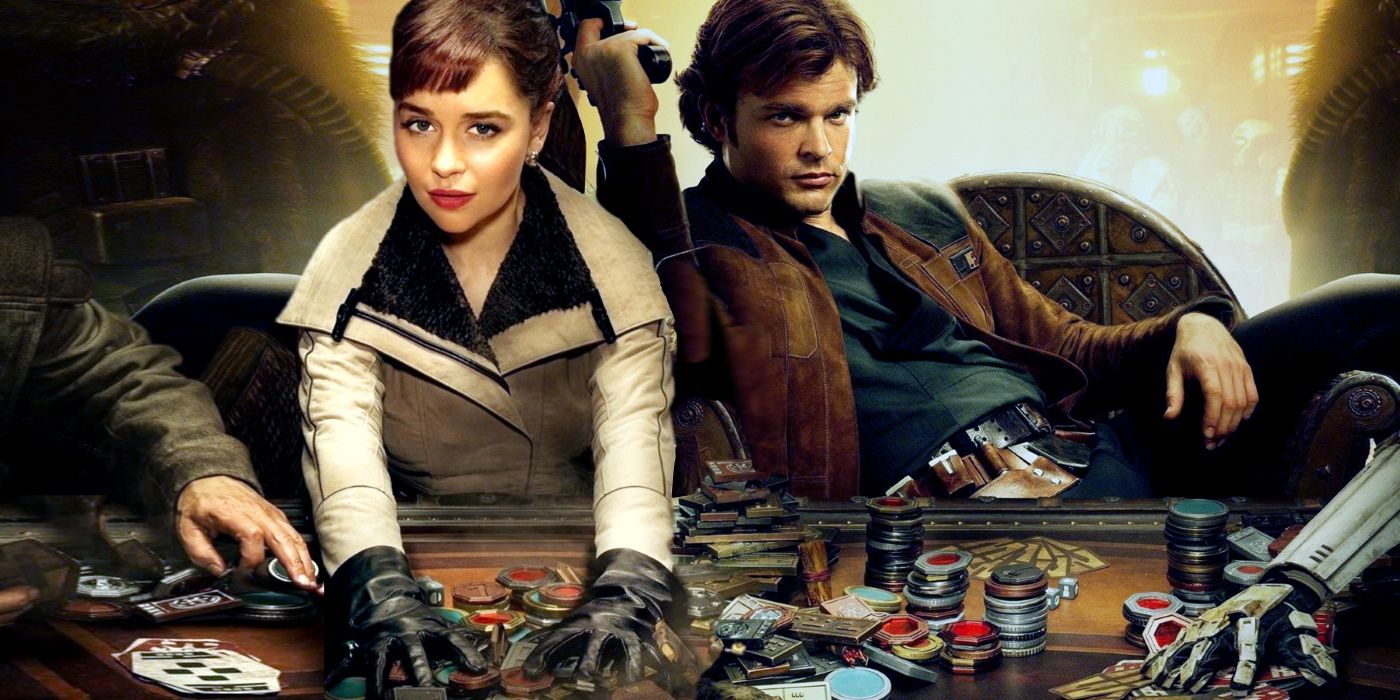
It's time for fans of Solo: A Star Wars Story to learn the card game Sabacc - because once they do, an original Star Wars trilogy moment will never be seen the same way again. The card game may seem impenetrable to casual fans in Solo, or even intentionally vague or unimportant. But believe it or not, the rules of Sabacc and the strategies employed by Han Solo and Lando Calrissian in their games are established in Star Wars canon.
In the previous version of the Star Wars canon, Han Solo won the Millennium Falcon from Lando in a game of Sabacc (the Corellian Spike variation). To commemorate the deal, Han had the dice from that game cast in gold - the same golden dice forever at home in the Millennium Falcon. Solo changes that bit of mythology from its very first scenes, but it's not the only change it makes.
RELATED: 30 Easter Eggs You Missed in Solo: A Star Wars Story
But to get there, fans will first need to learn how the game of Sabacc is actually played. If you couldn't help but wonder what the card's symbols, colors, and combinations really meant, then we're here to help. When we're finished, one of the most memorable moments from The Empire Strikes Back will have a whole new meaning.
- This Page: Star Wars' Sabacc Card Game Explained
- Page 2: What Solo's Sabacc Changes About Original Trilogy
How Does The Card Game 'Sabacc' Actually Work?
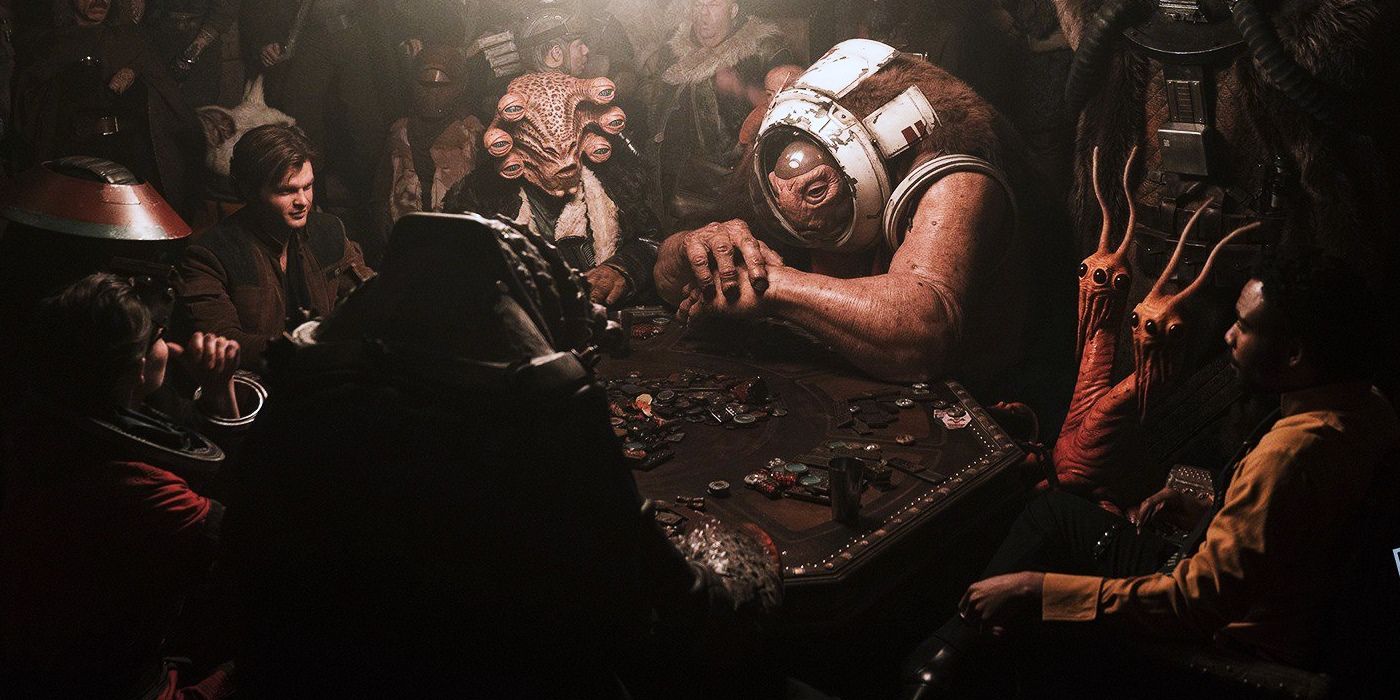
We'll stop short of outlining every intricacy of Sabacc since the version played in Solo is a variant, with some key differences. But in the set-up and scale, it's not all that different from traditional Poker. And in its basic gameplay, not all that different from Blackjack.
Each player is dealt two cards ranging in both positive and negative values, and can be dropped or swapped with the overall goal of adding up to either 23 or -23. Like Poker, bets are made and called after any number of rounds.
Special cards, suits, and hands can then be factored into the game, but the key gamble is in the possibility of a "Sabacc Shift" - swapping the values and suits of any unprotected cards in the players' hand. But the version played by Han and Lando in Solo should be easier to follow in the actual film.
Understanding Solo's 'Corellian Spike' Version

Fortunately for fans hoping to actually follow the game(s) of Sabacc being played in Solo: A Star Wars Story, the version played is even simpler. It's not stated in the film, but the variation of Sabacc being played is known as "Corellian Spike." The main difference being a slightly smaller deck with cards valued 1 to 10.
RELATED: Donald Glover is Up For a Lando Spinoff Movie
That and, this is the key to understanding the hands dealt, the goal is no longer to reach 23 or -23, but a perfect zero. This version of the game also scraps the whole sci-fi 'card-faces change' element and instead relies on a pair of Spike Dice. Cast every round of drawing cards, all hands are folded and re-dealt should the dice roll doubles (which they rarely do). After three rounds, bets are placed and called.

The element of Corellian Spike which decides both games featured in Solo is that the player whose card values come closest to zero wins. But if two players have the same number, the pot goes to the player who attained that number with the most cards in their hand (again, risk is a big factor in this variant).
That twist - winning thanks to extra cards in your hand - makes the two cards valued at '0' in each deck supremely valuable. The card is known as the Sylop ("Idiot" in Corellian). Win the hand with a Sylop, and you win the game.
...which is how Han Solo wins the Millennium Falcon in the new Star Wars canon, forever changing a future moment in The Empire Strikes Back.
Page 2 of 2: What Solo's Sabacc Changes About Original Trilogy
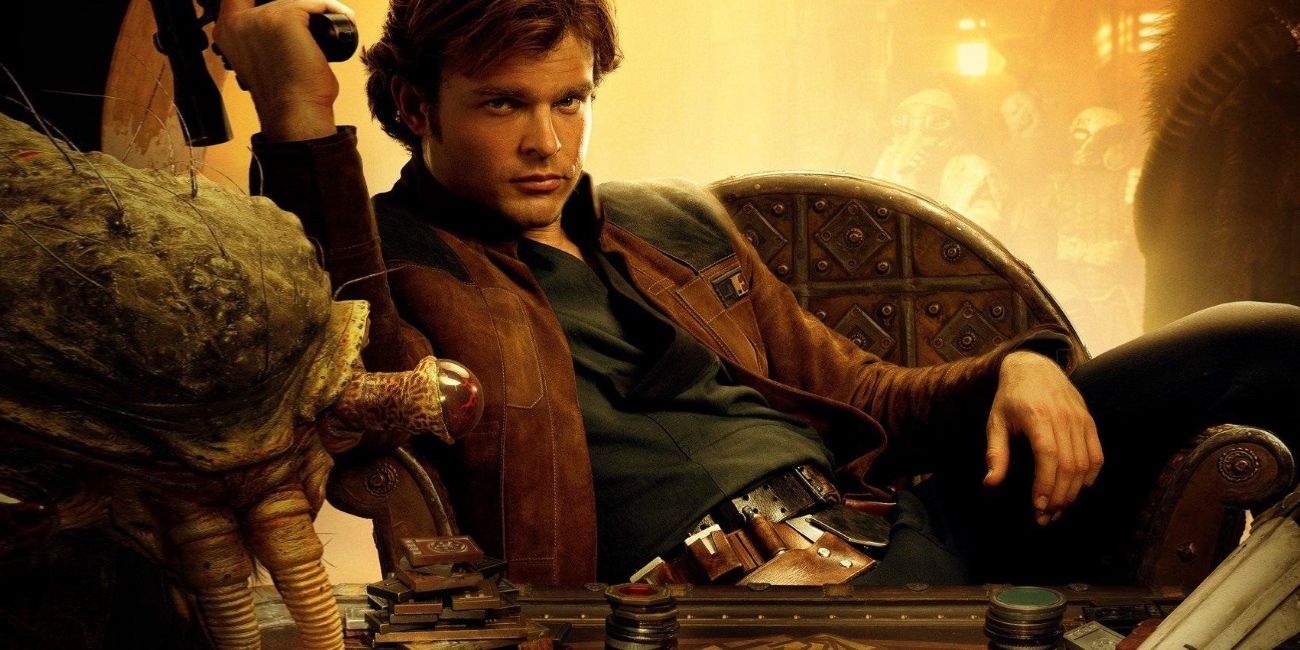
How Han Beats Lando in Solo's Sabacc Games
Assuming most fans won't pay as close attention to the hands dealt in the game, allow us to break down the two showdowns between Han and Lando, the truth about their wins, and how Solo's reversal reaches all the way forward to The Empire Strikes Back. It's tempting to think that sleight of hand is at work when Han wins the first pot, and another later with a -2 hand, but he and Lando are actually perfectly matched players.
The final hand is where things get extra confusing, since Han refers to his hand as "Straight Staves" and Lando to his as a "Full Sabacc" - neither of which mean anything in the established rules of the game. But whatever their nicknames, the mix of positive (green) and negative (red) cards reveal the result. Han's values appear to cancel out to zero, meaning he should win.
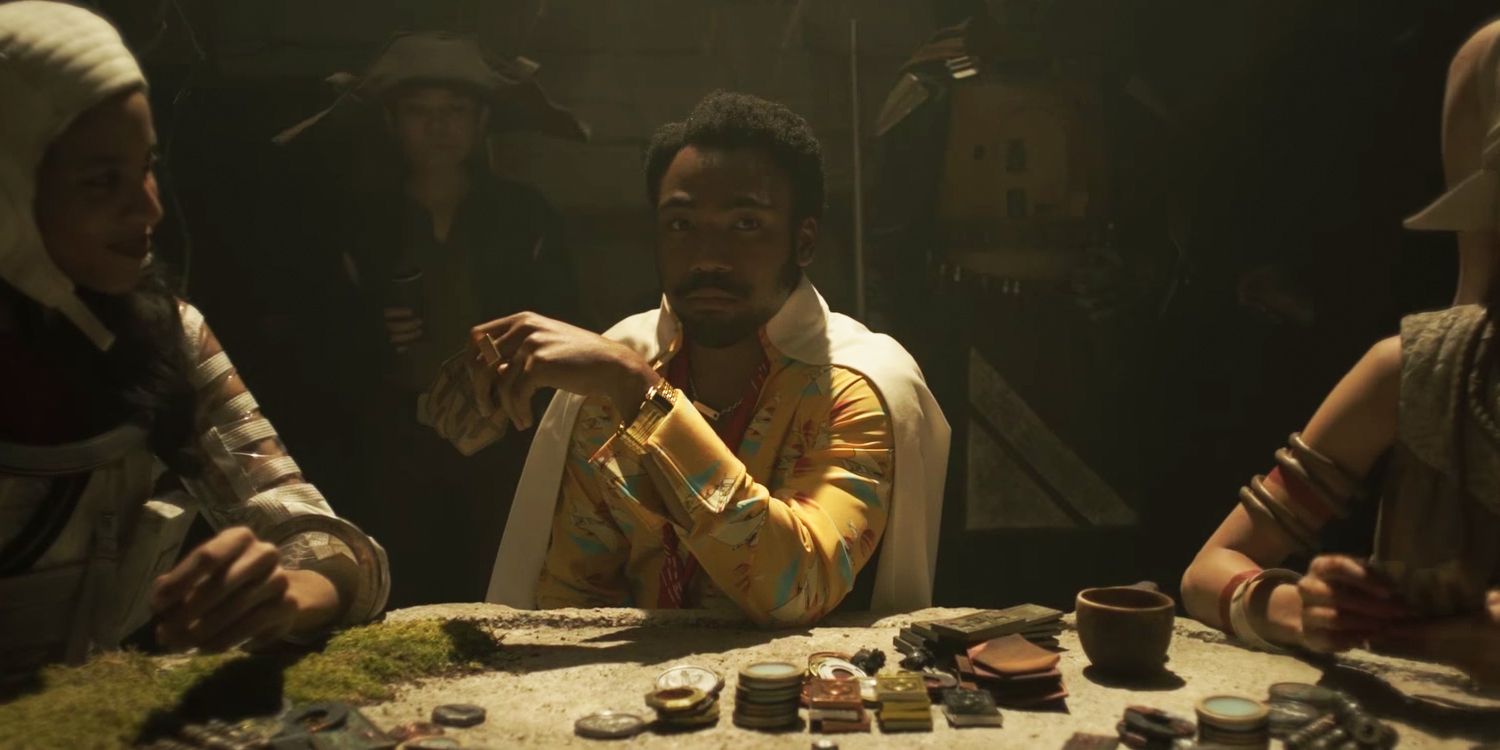
Until Lando plays two pairs which also cancel eachother out to zero, with a Sylop thrown in to give him the win (his five-card zero beats Han's four-card zero). And having won the hand playing one of the two Sylops in the deck, Lando also wins the game. That's what clues Han in to Lando having cheated, since both Sylops had already been played... just not the one hidden in Lando's sleeve stowed away for just such a face-off.
As luck would have it, that exact game is played out at the end of the movie. Lando with a four-card zero sum, and Han with the same - until he plays the same Sylop he snatched from Lando's sleeve.
The Empire Strikes Back Scene Forever Changed
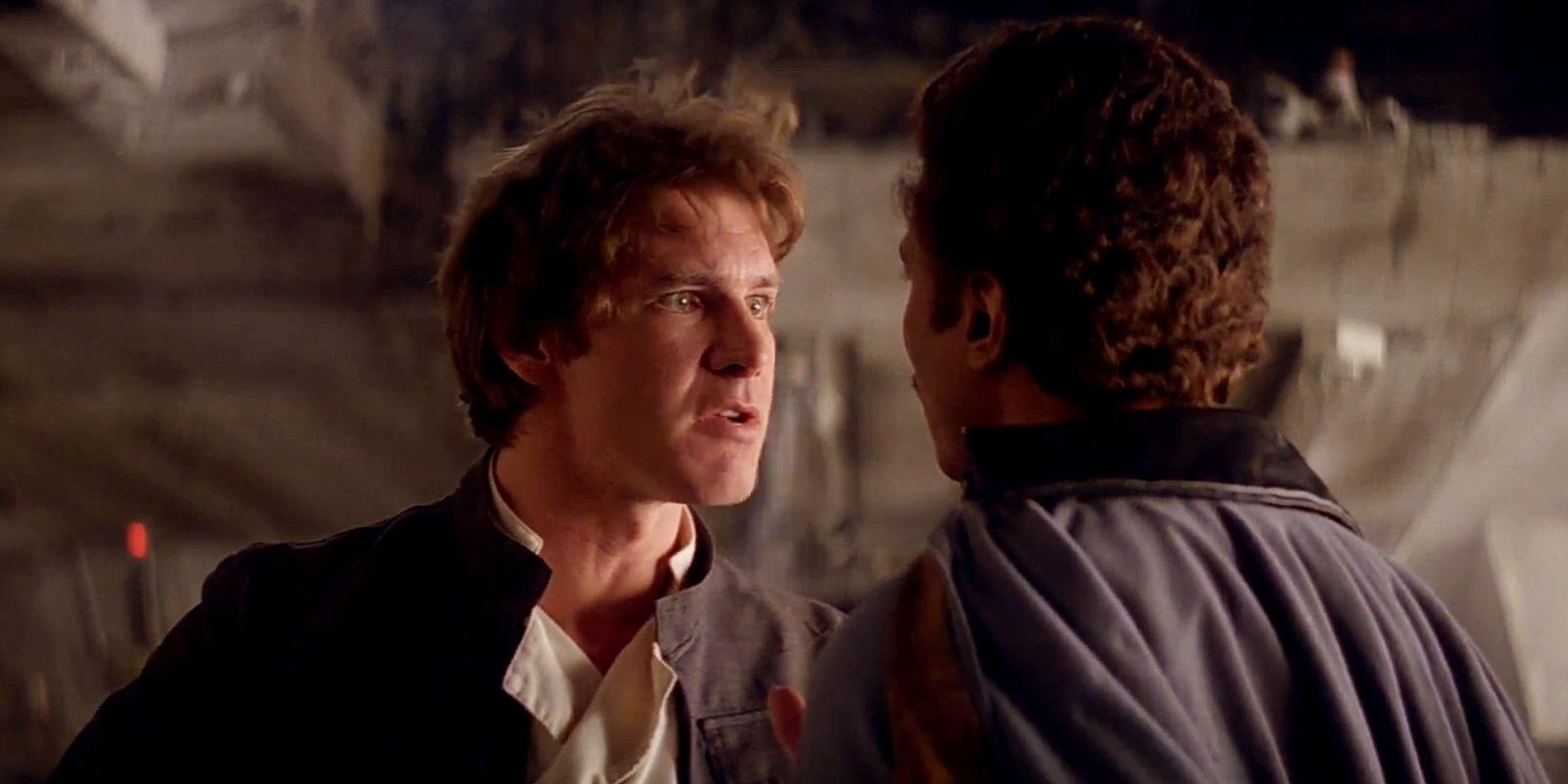
It's an important distinction to make, since Han and Lando effectively played eachother to two different tie games, leaving only sleight of hand to determine the winner. Only when Han boasts in the last scene that he has won the game "fair and square does Lando know he means cheating a cheater in the same way he was tricked.
RELATED: How Solo Connects To Jabba, Tatooine, and A New Hope
That exchange helps make sense of the pair's meeting in The Empire Strikes Back, when Lando asks Han what he's done "with my ship." Han's smile is almost instantly replaced by a downright threatening tone and pointed finger, alluding to a truth known only to them when stating that the ship belongs to him after winning it "fair and square."
At which point Lando instantly takes Han's meaning, freezes a moment, before shifting his attention to Chewbacca as his charming exterior returns. But making sure to give a knowing glance back to Han.

In the original version of their story, in which Han really did beat Lando for the Falcon, the posturing in this exchange is... odd, to say the least. After all, it should be Han bragging, or at least showing some renewed pride at having beaten Lando in a fair game of sabacc. Instead, the scene has presented as if Han 'got away' with the Falcon, presumably threatening Lando so he doesn't think of taking back what's rightfully his?
But after seeing how things played out in Solo: A Star Wars Story, Han's reminder takes on new life. By repeating the term "fair and square," Han is referring to the fact that he won it by cheating - the exact same way Lando had found to cheat. Which actually is a threat, and Han exercising leverage. If word got out that Lando Calrissian, professional "sportsman," gambler, and card player had cheated to amass his fortune - the mining station of Cloud City included - there would be no shortage of former opponents to come and collect.
As a result, this entire Empire reunion is flipped. Han is the one establishing what he has over Lando's head, with their meaningful glances communicating everything. It may turn the Falcon from a prize to a bribe, but it's based on acknowledging that Han really was the better Sabaac player that day on Vandor.
Something Han won't ever let his pal Lando forget.
NEXT: When is Solo Set in The Star Wars Timeline?
from ScreenRant - Feed https://ift.tt/2xdOXNE





No comments: